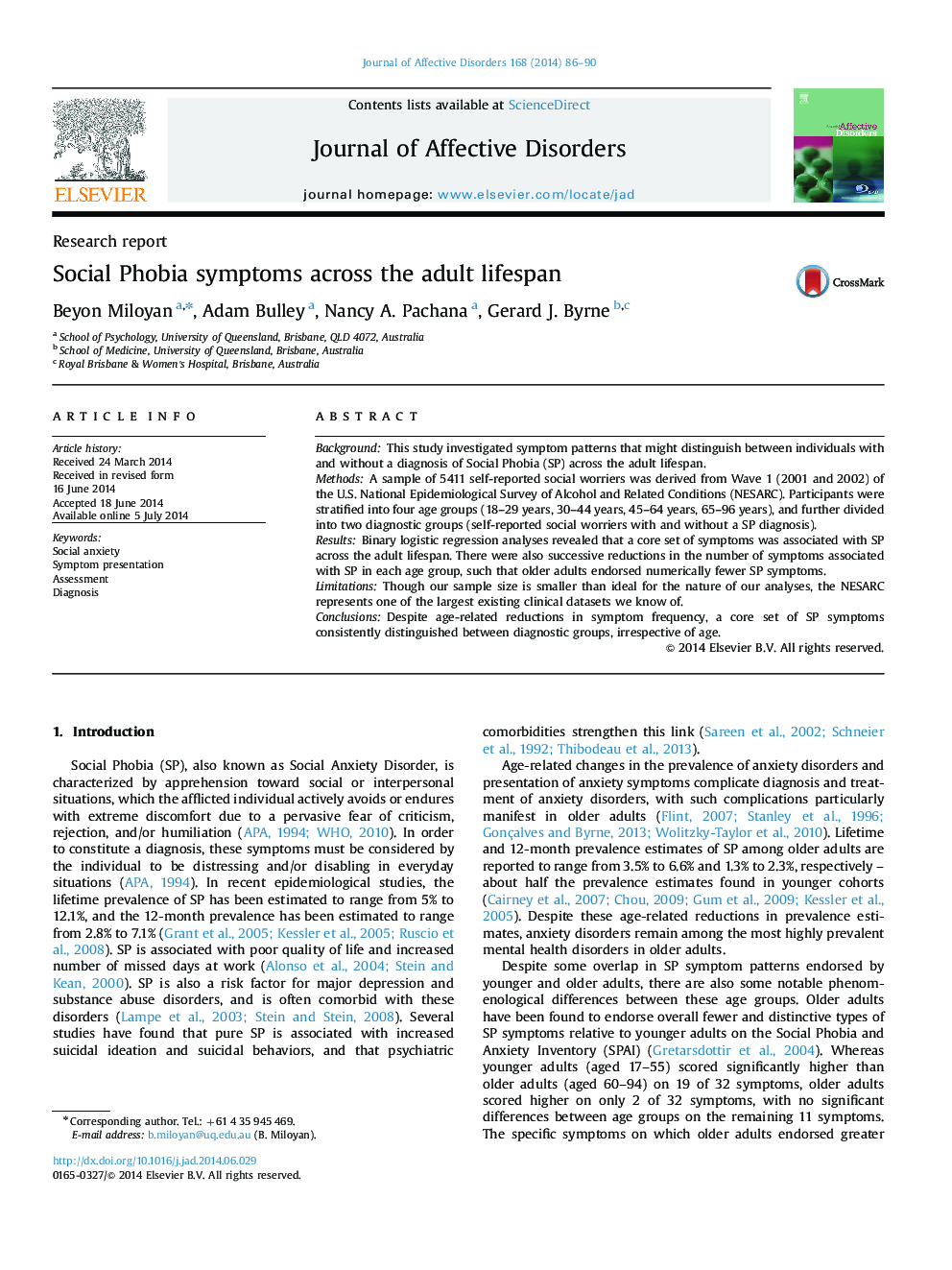| Article ID | Journal | Published Year | Pages | File Type |
|---|---|---|---|---|
| 6232779 | Journal of Affective Disorders | 2014 | 5 Pages |
BackgroundThis study investigated symptom patterns that might distinguish between individuals with and without a diagnosis of Social Phobia (SP) across the adult lifespan.MethodsA sample of 5411 self-reported social worriers was derived from Wave 1 (2001 and 2002) of the U.S. National Epidemiological Survey of Alcohol and Related Conditions (NESARC). Participants were stratified into four age groups (18-29 years, 30-44 years, 45-64 years, 65-96 years), and further divided into two diagnostic groups (self-reported social worriers with and without a SP diagnosis).ResultsBinary logistic regression analyses revealed that a core set of symptoms was associated with SP across the adult lifespan. There were also successive reductions in the number of symptoms associated with SP in each age group, such that older adults endorsed numerically fewer SP symptoms.LimitationsThough our sample size is smaller than ideal for the nature of our analyses, the NESARC represents one of the largest existing clinical datasets we know of.ConclusionsDespite age-related reductions in symptom frequency, a core set of SP symptoms consistently distinguished between diagnostic groups, irrespective of age.
